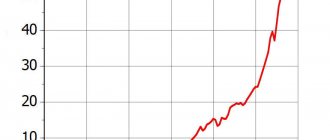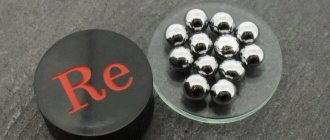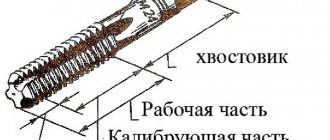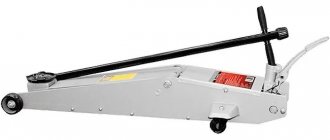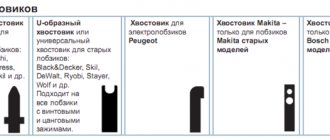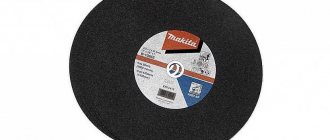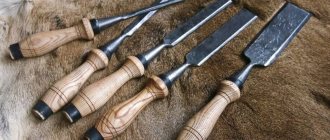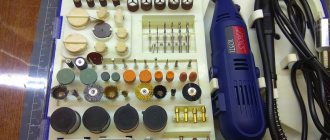02/18/2022 Author: VT-METALL
From this material you will learn
:
- History of the discovery of iron-carbon alloys
- Structural components of iron-carbon alloys
- Iron-carbon alloy diagram
- How to Read an Iron-Carbon Alloy Diagram
- Application of iron-carbon alloy steel
- Varieties of cast iron made from an alloy of iron and carbon
- Polymorphic transformations in iron-carbon alloys
The discovery of an alloy of iron and carbon was one of the most important events in the history of the development of metallurgy. It was these two elements that gave the world the most popular grades of steel and cast iron. These are the alloys from which most industrial equipment, metal structures, tools, and household products are produced.
Depending on the percentage of carbon in the iron, as well as the method of casting, these alloys acquire different properties: resistance to corrosion, extraordinary strength, elasticity, etc. You will learn about which alloys of iron and carbon are used today and how they are obtained from our material.
History of the discovery of iron-carbon alloys
The outstanding inventor Dmitry Chernov became famous for his iron-carbon diagram and his discovery related to polymorphic transformations. It was he who became the discoverer of special points in alloys such as cast iron and steel. According to the scientist, the location of the points on the diagram is influenced by the percentage of carbon.
The discovery became so significant that it marked the beginning of a new science - metallography.
The iron-carbon alloy diagram itself is a large-scale project developed by several scientists from different parts of the world. That is why the designations of phases and main points are international.
Obtaining steel. Metallurgy
Steel is the most common alloy on the planet. It is produced industrially from cast iron, from which excess carbon and other impurities are burned off under the influence of high temperatures. Steels are mainly produced in two ways: melting in open hearth furnaces and melting in electric furnaces. The material made in an electric furnace is called electric steel. It turns out to be cleaner in composition. In addition, there are many special processes for producing alloys with special properties, such as vacuum arc melting or electron beam melting.
You can learn more about steels and other alloys by studying the science of metallurgy. It is considered one of the branches of physics and covers not only information about steel grades and their composition, but also contains information about the structure and properties of materials at the atomic and structural level.
Students of specialized universities take a special course “Industrial Steels”, where they examine in detail special-purpose alloys: construction, improveable, cemented, for cutting and measuring tools, magnetic, spring-spring, heat-resistant, steels for structures in cold climates, etc.
Structural components of iron-carbon alloys
The basis of cast iron and steel is an alloy of iron and carbon. Both black alloys are indispensable when creating structural parts for technology. Their qualities and structure are determined by the properties of the basic components and impurities. It is also important to consider the nature of the interaction of elements.
Pure iron is a silvery-white metal that has a melting point of +1,539 °C. The metal is refractory and can have one of the polymorphic modifications - a or g.
VT-metall offers services:
Low temperature conditions (below +910 °C) lead to the first modification. In this case, iron is characterized by a body-centered cubic lattice. It is called a-ferrum. Iron is magnetic at temperatures up to +760 °C (up to the Curie point).
Heating iron causes the lattice to transform from body-centered to face-centered. To create g-iron, a high temperature regime is required - from +910 °C to +1,392 °C.
Carbon is a non-metallic element. Its melting point is +3,500 °C. In nature, the element can exist in the form of diamond or graphite. The first polymorphic modification does not occur in alloys.
If we talk about the carbon structure in the iron-carbon alloy, then it is layered. In this regard, the non-metallic element in its free form has the form of graphite, the peculiarity of which is its low ductility and strength.
Carbon is soluble in iron in both liquid and solid states. It is capable of creating a chemical compound called cementite, where the free carbon will also be in the form of graphite.
Possible constituents of iron-carbon alloys are listed below
:
- Austenite (A)
. It is a solid solution of elements in g-iron. It can only exist at high temperatures (above +727 °C). At the lowest possible temperature, the solubility will be 0.8%, and at +1,147 °C – 2.14%. The main feature of austenite is its high ductility. - Graphite
. It is an allotropic modification of carbon with low strength and high softness. May be present in graphitized steel and cast iron. There it will exist in the form of inclusions of various configurations. It is the shape that will have a direct impact on the technological and mechanical properties of the alloy. - Ledeburite
. This is a mechanical mixture of cementite and austenite, in which the proportion of carbon is 4.3%. To obtain ledeburite, a eutectic transformation is required at a temperature of +1,147 °C. If the temperature is +727 ° C, then austenite will turn into pearlite, and ledeburite will become a mixture of cementite and pearlite. The main characteristics of ledeburite are brittleness and hardness. The component can be found in all white cast irons. - Perlite (P)
. Another element of an alloy of iron and carbon. It contains 0.8% carbon. Perlite itself is a mechanical mixture of cementite and ferrite. It can be obtained by eutectoid decomposition (recrystallization) of austenite at a temperature of +727 °C. In honor of its breakdown, pearlite is called a eutecoid. It is characterized by a high level of strength and hardness. Pearlite can also improve the mechanical properties of the alloy. - Ferrite (F)
. It is a solid solution of interstitial elements in a-iron. It exists at low temperatures and has a body-centered cubic lattice. The solubility of carbon in ferrite is extremely low. Under normal conditions, it will be no more than 0.005%, and will reach a peak (0.02%) only at a temperature of +727 °C. Ferrite is less hard than austenite and is also more ductile. In this regard, it is well processed by cold pressure. - Cementite (C)
. The component is a compound of carbon and iron, namely iron carbide with the formula Fe3C. The percentage of carbon in the substance is 6.67. Cementite has a complex crystal lattice and melts at a temperature of about +1,600 °C. In an alloy of iron and carbon, it is both the most brittle and the hardest component. Consequently, the more component contained in the alloy, the higher its hardness. Cementite is also unstable, so under certain conditions it breaks down and forms graphite. The reaction occurs: Fe3C > 3Fe + C.
Rating of world countries by steel production for 2020
Global steel production at the end of 2022 increased by 3.4% compared to the previous year 2022 and amounted to 1869.9 million tons of steel. Interestingly, at the end of 2022, steel production decreased in all regions of the world except Asia and the Middle East.
The leaders in steel production at the end of 2022 were the following top 10 countries in the world:
- China - 996.3 million tons of steel
- India - 111.2 million tons of steel
- Japan - 99.3 million tons of steel
- USA - 87.9 million tons of steel
- Russia - 71.6 million tons of steel
- South Korea - 71.3 million tons of steel
- Germany - 39.7 million tons of steel
- Türkiye - 33.7 million tons of steel
- Brazil - 32.2 million tons of steel
- Iran - 31.9 million tons of steel
At the same time, China accounted for more than 50% of global steel production in 2022. To be precise - 53.3% of global steel production. Russia's share decreased from 4% in 2022 to 3.8% in 2022. In total, the CIS countries produced 100.4 million tons of steel, which is half a percent lower than last year. Full statistics on steel production in countries around the world can be found in the table below. The table includes countries around the world that produce steel in significant quantities (more than 5 thousand tons). Statistics are available for 2014-2019, while information for 2022 for some countries is not yet available. The data source is the World Steel Association.
| A country | 2019, thousand tons | 2018, thousand tons | 2017, thousand tons | 2016, thousand tons | 2015, thousand tons | 2014, thousand tons |
| The whole world | 1869000 | 1816611 | 1732171 | 1629096 | 1621537 | 1671128 |
| China | 996342 | 928264 | 870855 | 807609 | 803825 | 822306 |
| India | 111246 | 109272 | 101455 | 95477 | 89026 | 87292 |
| Japan | 99284 | 104319 | 104661 | 104775 | 105134 | 110666 |
| USA | 87927 | 86607 | 81612 | 78475 | 78845 | 88174 |
| Russia | 71570 | 72042 | 71491 | 70453 | 70898 | 71461 |
| South Korea | 71421 | 72464 | 71030 | 68576 | 69671 | 71543 |
| Germany | 39675 | 42435 | 43297 | 42080 | 42676 | 42943 |
| Türkiye | 33743 | 37312 | 37524 | 33163 | 31517 | 34035 |
| Brazil | 32236 | 35407 | 34778 | 31642 | 33258 | 33897 |
| Iran | 31900 | 24520 | 21236 | 17895 | 16146 | 16331 |
| Italy | 23245 | 24532 | 24068 | 23373 | 22018 | 23714 |
| Taiwan, China | 22065 | 23241 | 22438 | 21751 | 21393 | 23221 |
| Ukraine | 20848 | 21101 | 21417 | 24218 | 22968 | 27170 |
| Vietnam | 20066 | 15471 | 11473 | 7811 | 5647 | 5847 |
| Mexico | 18595 | 20204 | 19955 | 18824 | 18218 | 18930 |
| France | 14451 | 15387 | 15505 | 14413 | 14984 | 16143 |
| Spain | 13581 | 14321 | 14441 | 13616 | 14845 | 14249 |
| Canada | 12790 | 13443 | 13208 | 12646 | 12473 | 12730 |
| Poland | 9065 | 10167 | 10332 | 9001 | 9198 | 8559 |
| Belgium | 7905 | 7980 | 7842 | 7687 | 7257 | 7331 |
| Austria | 7423 | 6885 | 8135 | 7438 | 7687 | 7876 |
| Egypt | 7257 | 7807 | 6870 | 5036 | 5506 | 6485 |
| Great Britain | 7225 | 7268 | 7491 | 7635 | 10907 | 12034 |
| Netherlands | 6657 | 6813 | 6781 | 6917 | 6995 | 6965 |
| Indonesia | 6000 | 6183 | 5195 | 4746 | 4854 | 4351 |
| South Africa | 5666 | 6327 | 6301 | 6141 | 6417 | 6412 |
| Australia | 5493 | 5689 | 5328 | 5259 | 4925 | 4607 |
| Slovakia | 5300 | 5225 | 4974 | 4808 | 4562 | 4705 |
| Saudi Arabia | 5095 | 5240 | 4831 | 5461 | 5229 | 6291 |
| Sweden | 4721 | 4654 | 4927 | 4817 | 4557 | 4539 |
| Argentina | 4645 | 5162 | 4624 | 4127 | 5028 | 5488 |
| Czech | 4563 | 4938 | 4550 | 5306 | 5262 | 5360 |
| Thailand | 4190 | 6403 | 6762 | 5400 | 5070 | 5835 |
| Kazakhstan | 4085 | 3964 | 4641 | 4289 | 3910 | 3681 |
| Malaysia | 4000 | 4109 | 3215 | 2764 | 3784 | 4316 |
| Romania | 3500 | 3550 | 3361 | 3276 | 3352 | 3158 |
| Finland | 3473 | 4146 | 4003 | 4101 | 3988 | 3807 |
| UAE | 3327 | 3248 | 3309 | 3149 | 3006 | 2390 |
| Pakistan | 3313 | 4719 | 4966 | 3553 | 2892 | 2424 |
| Belarus | 2680 | 2470 | 2343 | 2188 | 2510 | 2513 |
| Qatar | 2558 | 2575 | 2644 | 2521 | 2593 | 3019 |
| Luxembourg | 2200 | 2228 | 2172 | 2175 | 2127 | 2193 |
| Serbia | 1929 | 1973 | 1477 | 1173 | 955 | 583 |
| Hungary | 1770 | 1989 | 1901 | 1274 | 1675 | 1152 |
| Greece | 1376 | 1467 | 1359 | 1158 | 910 | 1022 |
| Peru | 1240 | 1217 | 1207 | 1168 | 1082 | 1078 |
| Colombia | 1200 | 1219 | 1253 | 1272 | 1211 | 1208 |
| Chile | 1095 | 1145 | 1158 | 1153 | 1112 | 1079 |
| Bosnia and Herzegovina | 801 | 695 | 756 | 806 | 819 | 793 |
| New Zealand | 667 | 652 | 658 | 577 | 793 | 859 |
| Slovenia | 645 | 654 | 648 | 614 | 604 | 615 |
| Uzbekistan | 625 | 646 | 654 | 654 | 643 | 723 |
| Norway | 621 | 575 | 603 | 620 | 590 | 600 |
| Libya | 606 | 396 | 422 | 492 | 352 | 712 |
| Ecuador | 605 | 583 | 561 | 576 | 720 | 667 |
| Bulgaria | 595 | 666 | 652 | 527 | 543 | 612 |
| Moldova | 360 | 497 | 469 | 126 | 443 | 351 |
| Guatemala | 310 | 300 | 294 | 314 | 403 | 395 |
| Macedonia | 239 | 266 | 273 | 169 | 121 | 188 |
| Cuba | 235 | 225 | 221 | 244 | 285 | 256 |
| Salvador | 105 | 99 | 96 | 100 | 124 | 121 |
| Uruguay | 65 | 60 | 58 | 61 | 98 | 94 |
| Croatia | 65 | 136 | 0 | 0 | 122 | 167 |
| Venezuela | 50 | 129 | 444 | 553 | 1345 | 1485 |
| Paraguay | 25 | 25 | 24 | 35 | 48 | 47 |
| Azerbaijan | 200 | 180 | 180 | 180 | 180 | |
| Albania | 50 | 150 | 560 | |||
| Algeria | 2000 | 415 | 650 | 650 | 415 | |
| Bangladesh | 100 | 100 | 100 | 100 | 90 | |
| Ghana | 25 | 25 | 25 | 25 | 25 | |
| Other countries | 115 | 115 | 115 | 110 | 110 | |
| Israel | 300 | 300 | 300 | 300 | 300 | |
| Jordan | 150 | 150 | 150 | 150 | 150 | |
| Kenya | 20 | 20 | 20 | 20 | 20 | |
| DPRK | 1250 | 1250 | 1250 | 1250 | 1250 | |
| Morocco | 600 | 550 | 520 | 516 | 501 | |
| Myanmar | 35 | 35 | 35 | 35 | 35 | |
| Nigeria | 100 | 100 | 100 | 100 | 100 | |
| Oman | 2000 | 2000 | 2000 | 2000 | 1500 | |
| Portugal | 2215 | 2076 | 2010 | 2030 | 2070 | |
| Singapore | 618 | 596 | 520 | 501 | 540 | |
| Syria | 5 | 5 | 5 | 5 | 5 | |
| Trinidad and Tobago | 0 | 0 | 36 | 591 | 487 | |
| Tunisia | 50 | 50 | 50 | 50 | 150 | |
| Philippines | 1475 | 1378 | 1075 | 968 | 1196 | |
| Montenegro | 120 | 120 | 120 | 150 | 140 | |
| Switzerland | 1500 | 1450 | 1500 | 1475 | 1475 | |
| Sri Lanka | 30 | 30 | 30 | 30 | 30 |
Iron-carbon alloy diagram
The following boundaries can be distinguished on the alloy diagram:
:
- Ledeburite transformation line (ECF line). If the carbon content in the alloy is above 2.14%, then when it cools, the liquid phase under the line becomes ledeburite.
- Liquidus line (ACD line). Its peculiarity is that when the temperature decreases beneath it, the crystallization of alloys starts.
- Pearlite transformation line (PSK line). As the temperature decreases, the alloy underneath transforms from austenite to pearlite.
- Solidus line (AECF line). As the temperature decreases, the alloy underneath becomes hard.
There are also several important points on the diagram
:
- C. The substance becomes ledeburite, the carbon concentration does not change and remains at 2.14%. The liquid transformation temperature is +1,147 °C.
- E. At this point, austenite contains the maximum amount of carbon - 2.14% of the total alloy. This state is achieved at a temperature of +1,147 °C.
- P. At a temperature of +727 °C, ferrite enters the stage of maximum saturation with carbon (0.025%).
- S. Austenite turns into pearlite. The average carbon concentration remains the same and is 0.8%.
Typically, the temperature regime at which the required state of the alloy is achieved is designated by the letter A.
Due to the fact that the phases in iron-carbon alloys have different temperatures when heated and cooled, it is necessary to introduce additional notation.
What is steel
Steel is an alloy of two chemical elements: iron (Fe) and carbon (C), and the content of the latter should not exceed 2%. If there is more carbon, then this alloy belongs to cast iron.
But steel is not only a chemically pure compound of two elements; it contains both harmful impurities, such as sulfur and phosphorus, and special additives that impart the desired properties to the material - increase strength, improve workability, ductility, etc.
If the alloy contains less than 0.025% carbon and contains a small amount of impurities, then it is considered technical iron. This material differs from steel in all respects; it has high magnetic characteristics, and is used for the manufacture of electrical components. Pure iron does not exist in nature; it is very difficult to obtain it even in laboratory conditions.
Despite the fact that carbon is contained in a very small percentage, it has a significant impact on the mechanical and technical properties of the material. An increase in this substance leads to an increase in hardness, strength increases, but at the same time ductility sharply decreases. And, as a result, the technological characteristics change: with an increase in carbon, the casting properties decrease and the machinability deteriorates. At the same time, low-carbon steels are also difficult to cut.
How to Read an Iron-Carbon Alloy Diagram
Alloys of the iron-carbon system tend to change when cooled or heated, or when pressure increases or decreases. Graphically, such processes are indicated on a state diagram. Thanks to it, you can understand how this or that transformation of the alloy occurs.
The composition of the alloy with the initial proportion of carbon at a given temperature can be seen if you move along a vertical straight line, which corresponds to the carbon content in the alloy.
The rule is easier to understand with an example, so let's look at the AEC zone in the diagram. Near it there are areas of the liquid phase and austenite (AESG). Therefore, the compound in this region consists of the resulting solid austenite and a liquid phase.
Let us determine the carbon concentration for it, moving through different phases. To do this, you need to know the initial carbon concentration and the set temperature. In the example, this is 2.5% and +1,250 °C.
Now you need to draw a horizontal line from a point on the graph. Its intersection with AE, which borders the austenite zone, will show the carbon content in austenite at a temperature of +1,250 °C.
If the straight line intersects with AC, which borders the liquid phase zone, then you can find out the carbon concentration already in the liquid phase.
By maintaining the temperature using this method, we can determine the percentage of carbon in the phases of absolutely any alloy:
- in the AEC region in austenite and in the liquid phase;
- in the CDF region in the liquid phase (the percentage of carbon in cementite remains unchanged - 6.67%);
- in the GPS field in austenite and ferrite;
- in the QPKL region in ferrite;
- in the SEFK region in austenite.
When the carbon content becomes higher than 2.14%, the cooled alloy becomes closer to 4.3% carbon saturation (at the DC and AC lines) as it approaches +1147 °C (at the ECF level). The liquid then turns into a eutectic (ledeburite). The average carbon content remains unchanged.
Recommended articles
- Alloy steel: types, grades and purpose
- Alloy of iron and copper: scope
- Iron alloys: well-known and not so varieties
When moving towards a temperature of +727 °C, which corresponds to the PSK level, the carbon content in austenite approaches 0.8% (lines GS and ES). Then the austenite turns into eectoid, i.e. into pearlite. As is known from previous examples, the average carbon concentration is constant. In this case it is 0.8%.
Alloy production
The process of manufacturing the alloy comes down to the processing of cast iron, during which excess impurities are annealed and alloying elements are introduced. Several methods are used for this.
- Open-hearth - molten or solid cast iron with ore is smelted in an open-hearth furnace at 2000 C to anneal off excess carbon. Additives are introduced at the end of the melt. The steel is poured into ladles and transported to the rolling mill.
- Oxygen converter – more productive. Air or a mixture of air and oxygen is blown through the cast iron in the furnace, achieving faster and more complete annealing.
- Electric melting - melting is carried out in a closed furnace at 2200 C, which prevents gases from entering the alloy. An expensive method that only produces high-quality compounds.
- Direct method - in a shaft furnace, pellets obtained from iron ore are blown with combustion products of natural gas - a mixture of oxygen, carbon monoxide, ammonia, at a temperature of 1000 C.
The steel making process does not end there. In cases where it is necessary to obtain the most durable material, additional processing is resorted to.
Thermal method
Thermal methods include:
- annealing – heating and slow cooling of different types and at different speeds;
- hardening - heating above the critical temperature, which causes recrystallization of the alloy, and faster cooling;
- tempering is a procedure carried out after hardening in order to reduce the stress of the metal;
- normalization is the same annealing, but carried out not in an oven, but in air.
Thermo-mechanical method
Thermomechanical methods combine mechanical and thermal effects:
- high-temperature TMT - hardening - hardening, hardening, is carried out immediately after heating, while the alloy retains its austenitic structure. The change due to plastic deformation during rolling or stamping is retained by 70% and after cooling the steel turns out to be stronger;
- for low-temperature TMT – cold-rolled steel. The alloy is heated to achieve an austenitic state, cooled below the recrystallization points to achieve the appearance of a martensitic phase - within 400–600 C. Then hardening is carried out - hardening, rolling. When cooled, the effect is completely preserved.
Thermochemical treatment
Thermochemical treatment is the heating of alloys and holding them in certain chemical environments. The most well-known methods include:
- carburization – saturation of the alloy surface with carbon. In this way a wear-resistant top layer is obtained;
- nitriding – saturation of steel with nitrogen. The goal is the same - to obtain a top wear-resistant layer, but compared to carburization, nitriding provides higher corrosion resistance;
- nitrocarburization and cyanidation - saturation of the surface layer with both carbon and nitrogen. Provides higher speed and productivity of the process.
Application of iron-carbon alloy steel
Steel, like cast iron, is an alloy of iron and carbon. Metals are widely used, especially often used in mechanical engineering.
In steel, the carbon concentration is no more than 2%.
Metal examples
:
- tool steel;
- structural steel;
- technical hardware.
If in steel the carbon content was strictly less than 2%, then in cast iron it was more. On average, the concentration of the substance ranges from 2.5 to 3.5%.
In addition to iron and carbon, metals contain the following additives:
:
- manganese and silicon, the content of which is calculated in tenths of a percent (from 0.15 to 0.6%);
- phosphorus and sulfur, the concentration of which is hundredths of a percent (from 0.05 to 0.03%).
Steel, in which the carbon concentration is no more than 0.7%, is often used to create
:
- sheets;
- wires;
- ribbons;
- shaped profiles of different types;
- angle iron;
- T-iron;
- various parts used in mechanical engineering (for example, axles, gears, bolts, sledgehammers, hammers, etc.).
Steel with a carbon concentration of more than 0.7% is used in the manufacture of cutting tools
:
- beard;
- incisors;
- chisel;
- drill;
- taps.
The properties of a given iron-carbon alloy depend on the concentration of the non-metallic component. So, the more carbon there is, the stronger and harder the steel will be.
Steel: classification, features and description of alloy varieties
Steel is the most famous iron alloy in the world. In fact, when talking about iron structures and objects, we are talking about products (or their production) from one or another steel. 99% of the alloy is classified as a structural steel, so there are virtually no tools or equipment that use it.
In this article we will try to touch upon such topics as the classification of grades, the price of steel, its properties and use in construction.
Varieties of cast iron made from an alloy of iron and carbon
There are two main types of cast iron – foundry and ultimate. The first type is usually used in production and industrial applications. The second is used in the creation of steel using the oxygen-converter method. In the resulting compound, the proportion of manganese and silicon is extremely small.
Cast iron also has several varieties
:
- Half-hearted
. This cast iron has special properties, since part of the carbon in the composition is in the form of cementite, and the other part is in the form of graphite. - White
. Here the carbon is in the form of iron carbide. The name comes from the white hue of the fault. White cast iron is not used in its pure form, but is actively used in the creation of malleable cast iron. - Gray
. The cast at the fracture is silvery, which is why this cast iron is called gray. The scope of use of the material is quite wide, including because cast iron is easy to process with cutters. - High strength
. This variety can increase the strength of any material to which it is added. The material is obtained from gray cast iron and a small amount of magnesium. - Forgeable
. As with the high-strength variety, the base is gray cast iron. The annealing process helps increase ductility.
Leading countries in steel exports and imports
Steel is actively used in world trade. Thus, global steel exports at the end of 2022 exceeded 457.1 million tons.
Leading countries in steel exports , million tons:
- China - 68.6
- Japan - 35.8
- Russia — 33.3
- South Korea - 30.1
- EU (28 countries) - 28.4
- Germany - 26.0
- Türkiye — 19.9
- Italy - 18.2
- Belgium - 18
- Ukraine - 15.1
- France - 14.4
- Brazil - 13.9
- Taiwan, China - 12.3
- India - 11.1
- Netherlands - 11
- Iran - 9.3
- Spain - 8.6
- USA - 8.6
- Austria — 7.5
- Canada - 6.4
Leading countries for steel imports , million tons:
- EU (28 countries) - 44.9
- USA - 31.7
- Germany - 26.6
- Italy - 20.6
- Thailand - 15.5
- South Korea - 14.9
- France - 14.9
- Belgium - 14.8
- China - 14.4
- Vietnam - 14.1
- Türkiye — 14.0
- Mexico - 13.1
- Poland - 12.1
- Indonesia - 11.7
- Spain - 10.8
- Netherlands - 10.3
- Canada - 9.1
- Philippines - 9.1
- India - 9
- Malaysia - 8
Polymorphic transformations in iron-carbon alloys
Polymorphic transformations in iron-carbon alloys occur when the temperature regime is maintained.
If the temperature is less than +911 °C, then the state of iron is called α-ferrum. The crystal lattice of iron is bcc, which stands for volumetric face-centered cube. The peculiarity of the lattice is the large distance between the atoms.
At temperatures from +911 to +1392 °C, iron exhibits a gamma modification. The crystalline lattice of γ-ferrum is fcc, i.e., a face-centered cube. The distance between atoms is smaller than in the case of a volumetric face-centered cube.
When iron changes from alpha to gamma, its volume decreases. The reason lies in the form of the crystal lattice. In bcc, the atoms are not as ordered as in fcc.
The rule also works in the opposite direction. During the transition from the gamma stage to the alpha stage, the volume of the iron-carbon alloy increases.
If the temperature is in the range from +1,392 to +1,539 °C (the latter is the melting point of iron), then α-ferrum turns into its other variety - δ-ferrum. It is worth remembering that the structure of δ-ferrum is unstable, and therefore tends to transition to a more stable state.
As a result, it was possible to find out that steel and cast iron are alloys of iron and carbon with different contents of carbon and impurities. This directly affects the mechanical and chemical properties of steel, and they affect the scope of application of the final material.
The use of steel in the modern world
04/21/2015 Stainless steel tape has a wide range of uses, both in everyday human life and in highly specialized industries. In everyday life, cutlery and dishes are made from it. But in the industrial sphere, the tape was noticed in chemical, food, engineering, pharmaceutical and other serious areas. Due to the neutral behavior of steel in relation to many external factors, they do not affect the characteristics of the product. In addition, stainless steel is more resistant to temperatures and various chemicals. Most often, steel in steel production is found as aisi tape (https://www.metall-office.ru).
Scope of application of stainless steel tape
Mechanical engineering
In mechanical engineering, steel has found application in the manufacture of equipment, machine tools, tools and units for other categories of industry. Sheet steel is most often used for spare parts of devices that are subject to heat treatment.
The tape has found its application in the production of spare parts for alternating current magnetic cores, springs, spirals and heating parts of measuring and industrial devices.
Electric power industry
Nuclear energy uses high-alloy steel, which meets high requirements for the materials used. Steel has found a purpose in all types of electricity production, starting from alternative sources.
Chemical industry
The pipeline, reactor parts, tanks, and chemical equipment are made of stainless steel.
Food industry
The steel meets all sanitary standards for production equipment and food packaging. The appearance of the metal played a significant role. Stainless steel is one of the most used vessels for storing and transporting products. It is needed along the entire route from raw materials to the finished product for consumption.
Transport
It is equipped with bodies, containers and tanks that meet all the requirements for moving various cargoes. In the automotive industry, steel is used to make some parts of cars, ships, trains and airplanes.
Household
Steel has proven itself to be excellent for making cutlery, kitchen utensils and other household utensils. Many parts of household appliances (washing machine) are also made from steel.
Pulp and paper production
Equipment and pipes of modern enterprises are made from stainless steel.
Architecture and construction
Steel goes well with many building materials (stone, glass). It is applicable for finishing roofs, facades and interior work. The tape is used as a raw material for stairs, doors, windows, elevators, openings, frames, swimming pools. At the same time, stainless steel tape is an excellent decorative material for offices, subways, shopping centers and even restaurants.
Ecology of the environment
Stainless steel applies to the installation and modernization of treatment systems and filters.
Watch out for the car. Why Cars Have Become Worse
Other news on the topic:
- Metal and stainless steel products
21.10.2014
Metal products and all kinds of steel structures are in great demand and have come into widespread use both in everyday life and in working and manufacturing industries. Such…
- Stainless steel fencing in
12.07.2014
The Belaya Volna organizational association provides stainless steel fencing at incredibly competitive prices. The company has wonderful employees who love...
- Application of MSHL for arrangement of railway tracks
02.03.2015
The construction of railway tracks must always be carried out to the highest standard. Using MSHL 0.7 (www.lenprombeton.ru), 0.5 or 0.35 (inter-sleeper trays type I), MPL and…
- Applications of sand in modern construction
20.04.2015
Currently, many natural and artificial materials are used in the construction industry. For example, sand, without which the construction of any building is indispensable. Except…
- Metal structures in modern construction
04.03.2015
Different sectors of the economy have their own technological requirements that influence the metal structures used. Today it is not difficult to purchase everything for…
